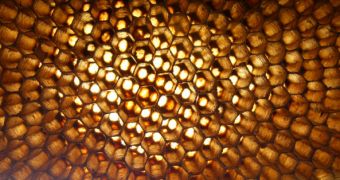Patients with mild to moderate burn wounds may benefit a lot from using honey as a dressing for their injuries, new studies show. Apparently, honey creates an appropriate environment for cellular renewal, facilitating the process of removing all impurities that may cause infections or septicemia.
Doctors are still uncertain about how honey actually works, but they managed to discover that bee secretions have a high anti-bacterial property that can be put to medical use. Over the centuries, honey has been used extensively to treat such wounds, with records going back as far as the Ancient times. With that in mind, New Zealand researcher Dr. Andrew Jull, of the Clinical Trials Research Unit at the University of Auckland, endeavored to demonstrate that bee honey clinically helps patients.
His results turned out inconclusive, but apparently the honey has no effect on other types of wounds, such as grazes, lacerations or ulcerations. It only seems to help with burns healing. Doctors speculate that its make-up and consistency have something to do with its regenerative properties. But so far, they were not able to identify the active substance that gives honey its medical properties.
Tests conducted at São José Hospital, in Lisbon, Portugal, separated burn patients in two groups, each treated with different drugs. Honey was used on the wounds the people in the first group had, while the rest were given sulfur sulphadiazine, a substance usually used in treating burn injuries. The doctors conducting the experiment noticed a significantly faster progress in healing in the honey group, with all its members healing completely by day 21. The other group took, on average, a couple of days more to fully recover.
This shows without a doubt that honey is not only efficient in treating such injuries, but it also does so faster than clinically devised cures, created specifically for this purpose. As a result, scientists have expressed their interest in continuing their research in the hope of someday being able to identify what exactly makes the liquid so efficient.

 14 DAY TRIAL //
14 DAY TRIAL //